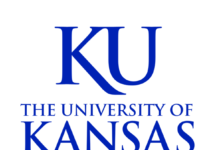For more than 80 years, the Ogallala Aquifer, the largest freshwater aquifer in the world, has been the main source of agricultural and public water for Nebraska and parts of seven other states.
Now researchers from the Institute of Agriculture and Natural Resources at the University of Nebraska-Lincoln and the Nebraska Water Center, part of the Robert B. Daugherty Water for Food Institute at the University of Nebraska, will play key roles as part of a U.S. Department of Agriculture National Institute of Food and Agriculture-funded consortium to address agricultural sustainability on the aquifer.
The consortium has been awarded a USDA Water for Agriculture Challenge Area Coordinated Agricultural Project grant, which will provide $10 million over four years for research and extension activities to address water challenges in the Ogallala Aquifer region. The grant will take a comprehensive approach, integrating management strategies to improve water use across the region.
The Ogallala Aquifer region accounts for 30 percent of total crop and animal production in the United States, and more than 90 percent of the water pumped from the aquifer is used for irrigated agriculture. With climate change projections and recent declines of groundwater, the aquifer, along with many of the world’s aquifers, is declining on a path many consider to be unsustainable.
Groundwater levels and management practices vary greatly across the Ogallala Aquifer region. This project seeks to develop a successful model of integration that leads to wide-scale changes in the management of the aquifer and informs aquifer management across the world.
“The Ogallala Aquifer is a vast resource that is vitally important to Nebraska agriculture and to our state’s ag economy, but it is not endless and needs to be used and cared for wisely and sustainably,” said Chittaranjan Ray, director of the Nebraska Water Center.
As part of the project, Ray will take a leading role in gathering adequate hydrologic and crop water use data, which can be used to manage pumping rates. A comprehensive hydrologic model exists for the Northern High Plains region of the Ogallala, but an aquifer-wide hydrologic model has never been created. An expanded model will provide an important baseline tool to estimate climate change and management impacts on groundwater levels across the region.
“This project recognizes and will build upon a wealth of knowledge and previous aquifer research to build a useable baseline of data on water levels, pumpage dynamics, institutional controls and climatic variability,” Ray said. “This data will be used to develop the best cropping management and irrigation technologies that will help maintain aquifer health into the future, keeping appropriate economic and social issues in mind.”
While gathering this data is challenging, Ray will rely on longstanding Nebraska Water Center connections with groups with a history of addressing the state’s water issues.
To implement new policies and management practices, establishing communication networks across the region will be necessary. In addition, the project will look to inform non-farm consumers about the role of water in food production. The team expects an improved understanding of climate change impacts on water resources and the identification of emerging technologies and management practices that could extend the life of the aquifer.
Co-investigators from UNL are Tim Shaver, agronomist and nutrient management specialist; Daran Rudnick, Water for Food Institute faculty fellow and irrigation management specialist; and Karina Schoengold, Water for Food Institute faculty fellow and environmental and resource economist.
In addition to UNL and NU, the multi-disciplinary consortium also includes scientists at Colorado State University, Kansas State University, Oklahoma State University, New Mexico State University, Texas Tech University, West Texas A&M University, Texas A&M AgriLife and the USDA Agricultural Research Service.
– See more at: http://ianrnews.unl.edu/ogallala-aquifer-focus-new-usda-funded-research-project#sthash.3p0ElFau.dpuf



